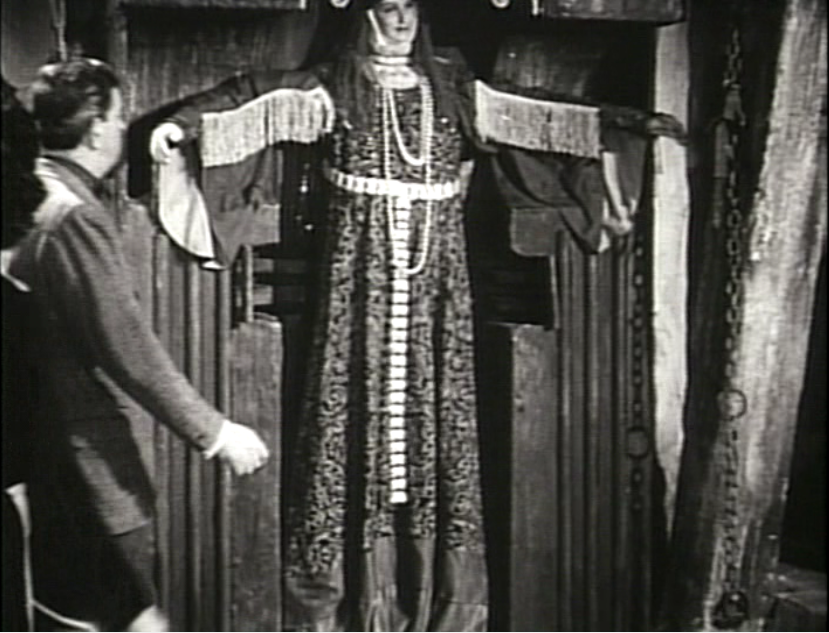Chamber of Horrors (1940) directed by Norman Lee
When Lord Charles Selford dies, he leaves his fortune to his young son John or in the case of John’s death, to his equally young niece June Lansdowne, who lives in Canada. He appoints his friend Silva as guardian for John. However, the Selford family jewels are locked in the tomb with Lord Selford, through a door with seven locks. The seven keys are given into the keeping of family solicitor, Havelock.

Years later, when both the children are grown, Silva summons June to England. She finds him in a nursing home, ill and suffering with guilt over some mysterious crime. Silva gives June a key (one of the seven) and is about to explain more, but is shot dead. By the time June is able to bring the matron back to the room, there is no trace of Mr. Silva, moreover, the matron claims there was no patient in that room to begin with!
Fortunately for June, her sassy and man-hungry best friend Glenda Baker was waiting outside, and can confirm that June didn’t just make up the existence of Silva. They’re able to make a convincing case to Scotland Yard in the persons of Inspector Cornelius Sneed and recently resigned man about town Dick Martin. While Inspector Sneed begins the laborious process of police investigation, Dick assigns himself as June’s personal caseworker. They soon begin to realize that Silva’s death and disappearance are only the beginning of a murderous conspiracy that will end in…the Chamber of Horrors!
This film was loosely based on Edgar Wallace’s novel The Door with Seven Locks and had that title in Britain, changed to the scarier-sounding “Chamber of Horrors” for the American release.
The chamber in question is not the tomb secured with seven locks, but a separate building filled with the sinister Dr. Manetta’s collection of poisoned cups and torture implements. (The doctor claims descent from the Torquemada clan.) The most notable feature is a “maiden” that slowly embraces its victims with bladed arms.
Despite the name, this is in no way a horror movie, but instead one of the mystery-thrillers that were popular in Britain in the prewar era. As soon as a foreigner and his mute servant are introduced, it’s clear that they’re villains of the piece. (Content note: now-outdated term for the physically disabled used.) Dick openly admits suspecting Dr. Manetta just from his appearance. Which is not to say there aren’t twists before the end.
June is about as good as we could expect from a female lead given when the film was made and its genre. She’s a plucky, adventurous girl not given to unnecessary breakdowns, but becomes a damsel in distress for the last act. The romance is one of those instant attraction things so common to this sort of plotline. Glenda is a bit more stereotypical, but gets many of the good lines. (She especially plays off Inspector Sneed, whose constant exhaustion is only partially faked.)
The acting is decent to good, and the humor balances well with the thrilling bits.
While this movie is suitable for ages ten and up, parents may want to talk to younger viewers about stereotyping people as villains because of nationality or handicaps.

